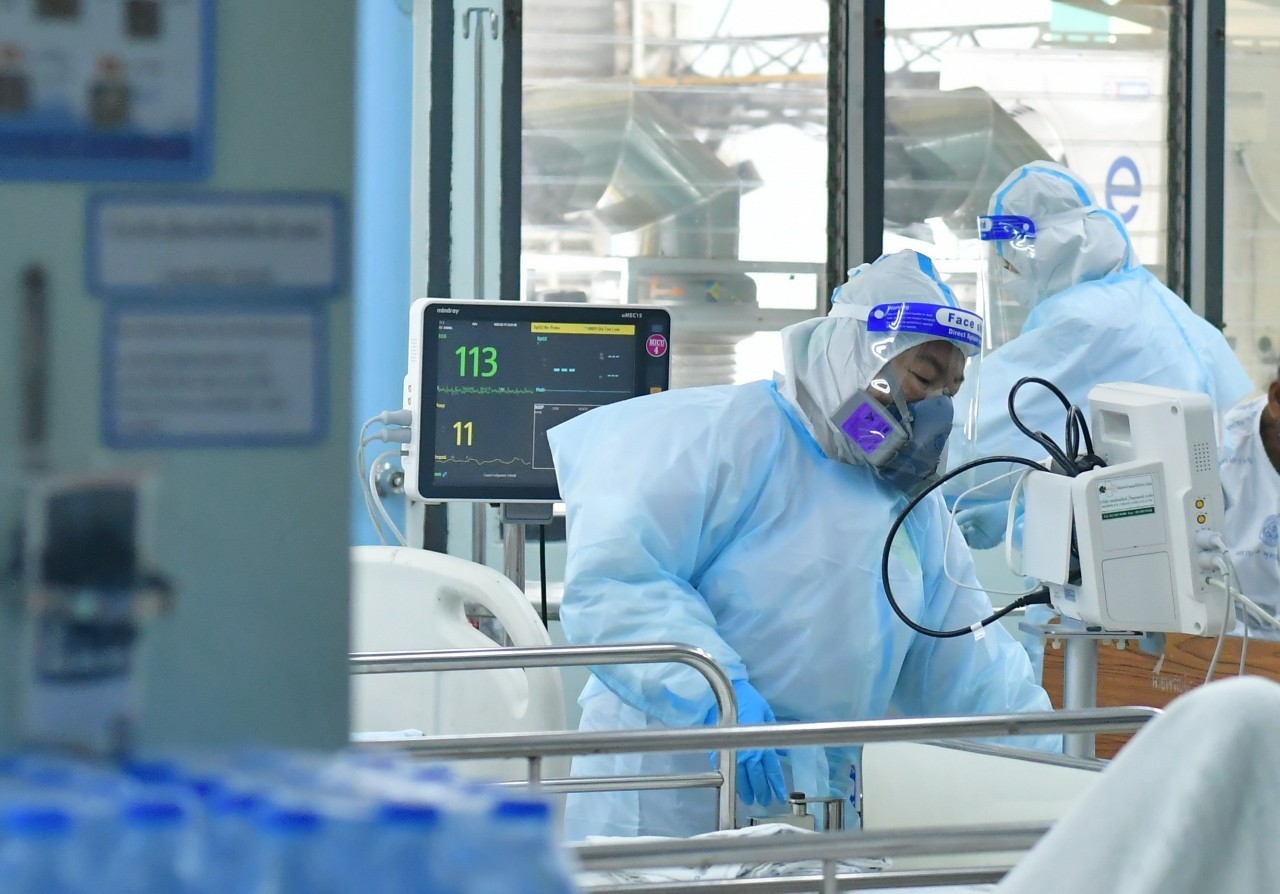
- Home
- DescriptionNews
Reduce access to non-COVID care

Reduce access to non-COVID care
A new study finds that access to non-COVID health services in Thailand declined while excess death rose during the pandemic.
The study, conducted by the International Health Policy Program (IHPP) and endorsed by the National Health Security board, covers the period from Apr 2020 to Sep 2021 — when COVID-19 first wave (Jan-Dec 2020), second (Dec 2020-Mar 2021), third (Apr 2021) and fourth (Dec 2021) were reported in Thailand.
Dr Viroj Tangcharoensathien, Senior adviser to IHPP, revealed that the study found overall inpatient visits had dropped by 14.1% compared to the pre-COVID period. The admission rate declined the most (by 29%) during the pandemic’s first wave.
Health service access for emergency and critical non-COVID patients also fell during the study period.
The admission rate for patients with ST-elevation myocardial infarction (STEMI), a type of heart attack that causes severe complications and death, was reported to sink by 6.8%.
Re-admission rates within 28 days after discharging from the inpatient ward surged by 32.5% on average. The re-admission rate was inflated by 82.2% and 104.9% during the first and third COVID-19 waves.
For patients with stroke, the admission rate and access to a thrombolytic or a clot buster drug. shrunk by 7.4% and 13%, respectively.
Dr Viroj said a similar trend was reported among patients with chronic disease, of which the admission rate plunged by 12.1%.
The admission rate for hypertension patients decreased by 2.2%. Their hospital visits rose by 12.2% after the COVID-19 first wave, while their hospital mortality rate increased by 6.7%.
Inpatient admission rate for those with chronic obstructive pulmonary disease and asthma reduced by 8.9% and 29.8%, respectively. The hospital mortality rate for asthma patients hiked by 48%, while the patients’ demand for ventilators increased by 46.7%.
The surgical rate in elderly patients also declined drastically, which was observed through cataract surgical rate (CSR) (reduced by 14.1%) and Arthroplasty or Joint replacement surgery (42.1%).
Cancer patients’ admission rate and access to chemotherapy plummeted by 4.6% and 10%, respectively. The hospital mortality rate for patients with kidney failure rose by 10.2%.
Access to maternal and child health (MCH) has been severely affected by the COVID-19 pandemic. The IHPP study finds maternal mortality rate surged by 153.4%, especially during the fourth coronavirus wave that saw the rate soared by 450.9% due to maternal coronavirus infections.
Miscarriage cases increased between 10% and 20% during the second and third waves.
Preeclampsia cases rose by 27.9% during the second wave because mothers couldn’t properly access prenatal care during the lockdown.
“These numbers show the negative impacts of the pandemic on access to healthcare services.
But there was also a positive impact on infectious disease, including in patients with seasonal flu whose admission rate declined by 80% to 90% during the study period. This resulted from social distancing and mask-wearing,” said Dr Viroj.
The study also looks at the excess mortality rate for non-COVID cases. For example, the excess mortality rate for male patients with respiratory infection increased from 21.3% to 28.5% between 2020 and 2021, while female patients rose from 7.6% to 11.3% in the same period of time.
The excess mortality rate from parasite infection surged by 24% in males and 75.3% in females, and 3.8% in men and 4.6% in females with non-communicable diseases.
“This finding proves the necessity of health facilities’ preparation for the spread of Omicron variant, which may lead us to experience to the fifth wave,” said Dr Viroj.
“We urge the hospital managers to review their business continuity plans, which should ensure emergency care access for non-COVID patients and lower their death rate.”
Encouraging the coronavirus asymptomatic or mild-symptom patients to isolate at home or community isolation facilities is necessary for reserving health resources for emergency non-COVID patients. Hospitals should prioritize emergency cases.
Ensuring people’s access to quality self-test kits and vaccines is also vital for reducing emergency cases among coronavirus patients, suggested Dr Viroj.

